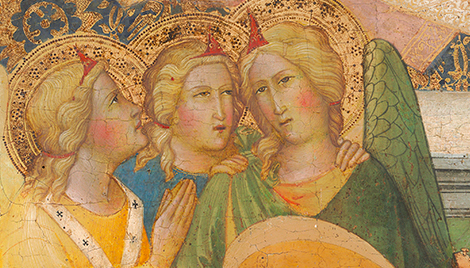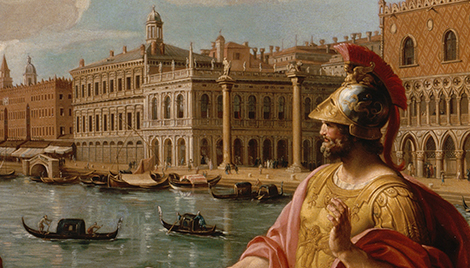Kress History of Art Institutional Fellowship at the Kunsthistorisches Institute
Elizabeth Bernick, PhD candidate at Johns Hopkins University, was chosen as the 2018-2020 Kress History of Art Institutional Fellow at the Kunsthistorisches Institut in Florenz (KHI). Below, Ms. Bernick describes the second year of her fellowship and the work completed on her dissertation Drawing Connections: Cesare da Sesto's Sketchbook and the Production of Style.
Elizabeth Bernick
The first year of my fellowship was highly productive and—while adjusting to life in a foreign country at a complex research institute had its challenges—relatively straightforward. The same cannot be said for my second year, as the arrival of COVID-19 in late February threw Florence, the country, and the world into chaos. Despite the existential and practical challenges brought about by the global pandemic, I am proud of the progress I made on my dissertation over the past academic year, and the array of KHI programming I attended. As 2019 was the 500th anniversary of Leonardo’s death, there was a full calendar of events. In particular, I was lucky to attend the KHI’s three-day conference in October dedicated to Leonardo da Vinci’s codices, where I had to opportunity to learn from and meet many of the most important Leonardo scholars in the world. I also traveled to Paris in January to see the Louvre’s historic exhibition covering every phase of Leonardo’s life; while there I also spent a day in their Study Room analyzing several drawings I discuss in my dissertation.
In October 2019 I submitted a second draft of Chapter Two of my dissertation, an expanded version of the article that I wrote and was published in Master Drawings during the first year of my fellowship. I spent much of that fall writing Chapter Three, which focuses on Cesare da Sesto’s time in Raphael’s workshop in Rome. My research has uncovered new connections between Cesare and a group of antiquarian artists in Rome (including Jacopo Ripanda, the Oxford Master, and Baldassarre Peruzzi), connections I discovered by comparing the drawings in a group of sketchbooks all produced in Rome in the first two decades of the Cinquecento. The chapter also explores new hypotheses for the genesis of erotic couples in the Raphael workshop that would eventually become the infamous Modi engravings, including the hitherto overlooked role Cesare played in this process. By closely studying drawings that Cesare executed ca. 1509 - 1511, I was also able to place him among the group of artists drawing and learning alongside Raphael in the Stanza della Segnatura. This raises important new questions about the nature of Raphael's "workshop" during his early days in Rome.
I was meant to spend several weeks in March conducting research in Messina and Palermo. Unfortunately, I had to cancel this research trip at the last minute due to the arrival of COVID-19 in Italy. Nevertheless, I was able to complete Chapter Four of my dissertation, which explores Cesare’s time working in Naples and Sicily. My research has uncovered new possible explanations for why Cesare left Rome for Naples, a new chronology for his paintings executed in the south, and a new interpretation of the political circumstances surrounding the commission for the Cava dei Tirreni altarpiece. Incidentally, I also discovered a large number of paintings made in eastern Sicily immediately after Cesare painted the Pala Kress in Messina that are all clearly responding to this seminal work. I plan to dedicate an article to this phenomenon once I have completed my dissertation. I wrote much of Chapter Four while in London, where I stayed with family from early March to mid-June, when it was safe to return to Florence.
Cesare da Sesto, Madonna and Child with Saint John the Baptist and Saint George, called the Pala Kress, c. 1513-15, Samuel H. Kress Collection, Fine Arts Museums of San Francisco.
Over the past two years, this fellowship has given me access to one of the best libraries for the study of Italian Renaissance art in the world, a scholarly community with which I could share my ideas, and the precious gift of uninterrupted time to write. Thanks to this fellowship, I have been able to complete all of the research for my dissertation and written three chapters. I am now on track to defend in Fall 2020.



